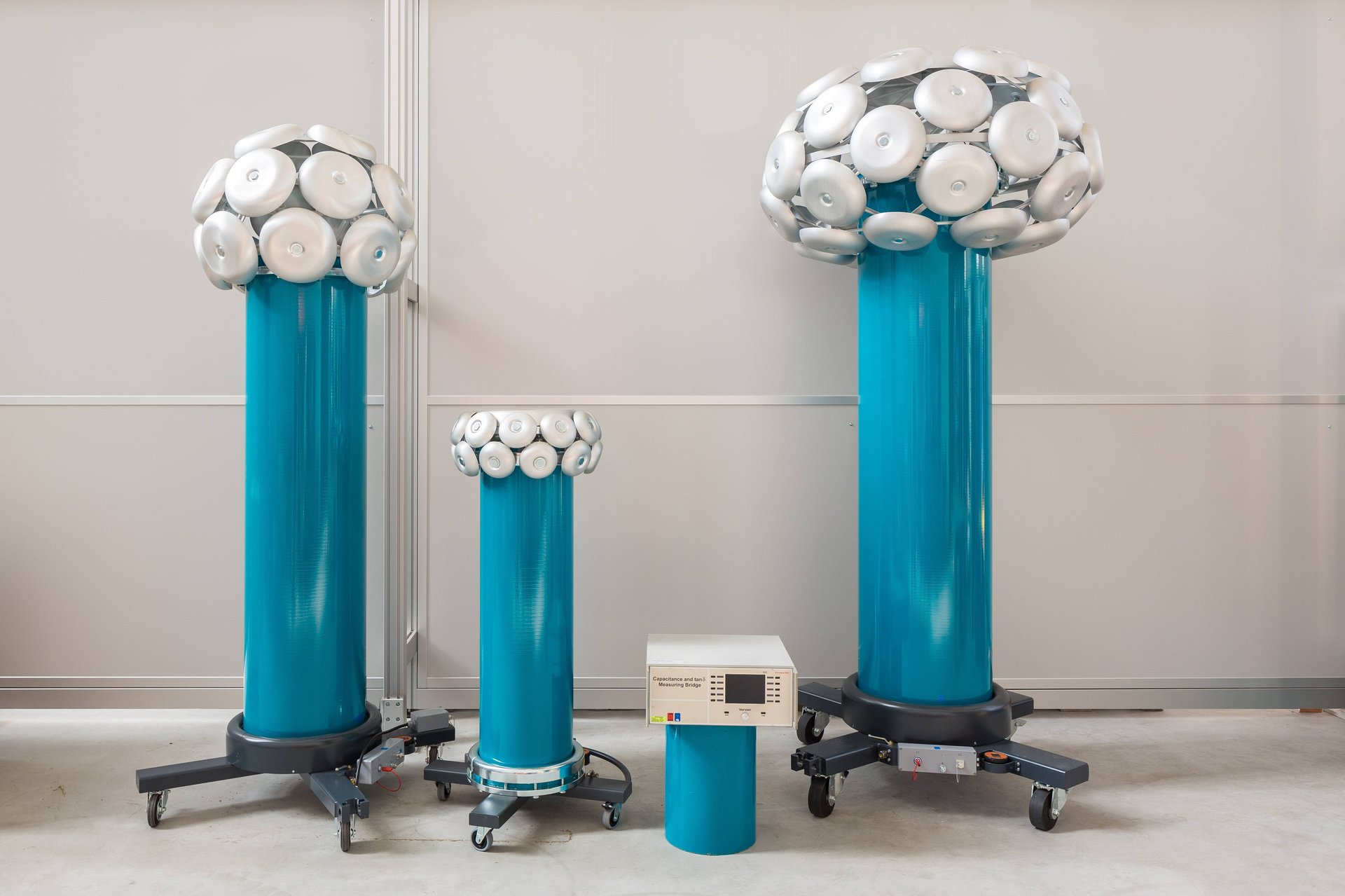Measurand power
Calibration of a power measuring system via the power
Electrical power components, calibration methods
The electric voltage and the current are the components of electrical power.
Simultaneous measurement of both measurands yields the measurand "electrical power".
Derived from this, there are two calibration methods that can be considered:
In the past, component calibration was the only method of calibrating the power measuring instruments and power measuring systems. In the areas of low voltage and extra-low voltage, high-precision power sources are now available that permit simultaneous calibration of the voltage measuring channel and current measuring channel. The calibration method has become so widespread that separate calibration of the voltage measuring channel followed by calibration of the current measuring channel is hardly ever used any more today.
Calibration methods for a power measuring system in high-voltage technology
In high-voltage technology a power measuring system will comprise:
- Voltage transformer (high-voltage divider, high-voltage sensor)
- Current transformer (current sensor, current monitor)
- Power measuring instrument for low-voltage measurands
This group of components is referred to as a measuring system and can be viewed as an inseparable unit.
Until recently, the component method for calibration was the only method for power calibration in high-voltage technology. The high-voltage measuring instruments are calibrated following a calibration procedure that is suitable for high-voltage applications, while the low-voltage component is calibrated with a separate calibration procedure. The absolute necessity for calibration of power measuring systems in high-voltage and high-current ranges, for example the power loss measuring systems used by transformer manufacturers, meant that this calibration method, which was the only available calibration method for this purpose, was used widely in high-voltage test fields.
The system calibration of power measuring systems only became available thanks to the developments in high-voltage technology and power electronics in recent years. Even today, the production of a mobile power calibrator that works with high voltages and high currents is still a design challenge that demands outstanding performance and excellence. The technical difficulties involved with providing a mobile high power source are the reason why this calibration method is used extremely rarely. System calibration of a power measuring system is directly comparable to the above-mentioned calibration of a tabletop device by means of a power calibrator. However, system calibration of a power measuring system offers a significant simplification of the calibration process, which invariably leads to lower measurement uncertainties.
The comparison of calibration methods of the power measuring systems explains the details of the two calibration methods and the principles behind them.
Read moreAdvantages of system calibration at a glance
-
System calibration delivers lower measurement uncertainties
than component calibration, with similar workload and expense.
-
The process for system calibration is simpler
than component calibration.
-
A system calibration of a power measuring system takes effects into account
that cannot be covered by the component calibration approach. The best example of this is the interference influence of the high voltage on the measuring cables.
-
The calibration certificate for system calibration
of the power loss measuring system certifies the measurement uncertainty for the overall measuring system; this corresponds to the results obtained after application of standard ISO/IEC 60076-19 to calibration results obtained with the component method.


